Genki 2 (6) CH 14 P 54 ほしい
Today’s Random Topic
わたしの好(す)きな映画(えいが)は、色々(いろいろ)ありますが、
I have a lot of favorite movies though,
好(す)きな映画(えいが)の一(ひと)つは、”おくりびと”です
One of my favorite movies is “Okuribito” (“Departed”).
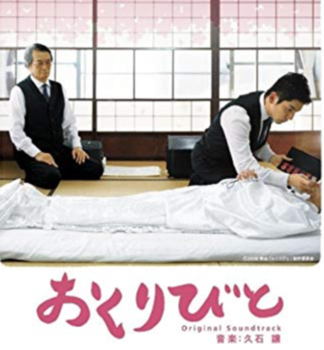
この映画(えいが)は、アメリカのアカデミー賞(しょう)、外国語部門(がいこくごぶもん)をとりました。
It won an Academy Award in the Foreign movie category in America.
その映画(えいが)を好(す)きな理由(りゆう)は、日本(にほん)人(じん)のお葬式(そうしき)の文化(ぶんか)がわかるからです。
The reason why I like it is because I was able to understand Japanese funeral culture.
先月(せんげつ)、妹家族(いもうとかぞく)が飼(か)っていた18歳(さい)の黒猫(くろねこ)のジジちゃんが死(し)にました。
Last month, my sister’s 18-year-old cat Gigi passed away last month.
その時(とき)のペットの葬儀屋(そうぎや)のペットの骨(ほね)の焼(や)き方(かた)を見(み)て、このおくりびとを思(おも)い出(だ)しました。
When I saw how the pet funeral service cremated Gigi, I remembered the movie, “Okuribito”.
ペットの葬儀屋(そうぎや)は、そのペットの骨(ほね)だと言(い)って違(ちが)う骨(ほね)を飼(か)い主(ぬし)に持(も)ってきたりする悪徳(あくとく)なところもあるようです。
There are some bad pet funeral services that don’t care about the pet and bring back bones that is not the lost pet’s bone.
でも、ここは違(ちが)いました。ペットの死体(したい)を丁寧(ていねい)に扱(あつか)います。
However, this one was different. They treat deceased pets carefully.
家(いえ)の前(まえ)にワゴン車(しゃ)を持(も)ってくるのですが、その中(なか)でペットを3時間(じかん)くらいで焼(や)けるんです。
They bring their wagon car in front of the pet owner’s house, and cremated the pet in the car in about 3 hours.
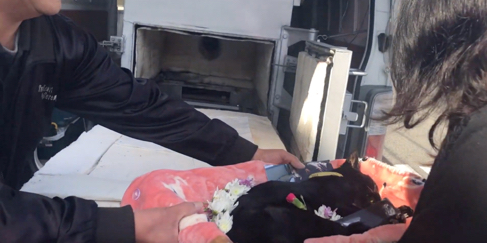
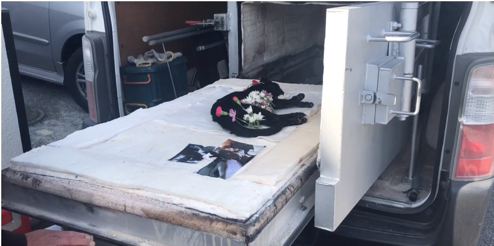
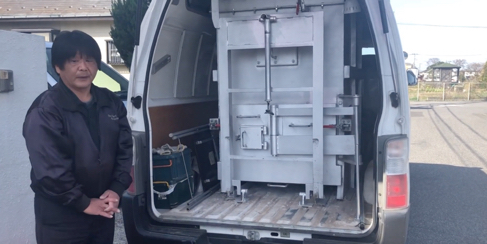
つい、「この車(くるま)は、フェラーリより高(たか)くないですか?」と聞(き)いてしまいましたが、古(ふる)いトヨタのワゴンですが特注(とくちゅう)なので1000万円(まんえん)だと言っていました。
I asked him like, “Isn’t this car more expensive than a Ferrari?” without thinking, and he said it cost more than 10,000,000 yen (about $100,000) since it’s a special custom-made car able to cremate although it’s an old Toyota wagon.
骨(ほね)は確実(かくじつ)に自分(じぶん)のペットのものなので、飼い主(かいぬし)は安心(あんしん)です。
Owners feel relieved since the bone is definitely their pet’s.
しかも焼(や)いている間(あいだ)は家(いえ)の中(なか)で待(ま)つことができます。
On top of that, owners can wait inside of their house while the pet is cremated.
焼(や)きあがると、スタッフが家(いえ)にいる私(わたし)たちを呼(よ)んでくれて、骨(ほね)を丁寧(ていねい)に拾(ひろ)って、小(ちい)さくて白(しろ)い箱(ばこ)に入(い)れてくれます。
When it’s done, the staff call us inside, and pick the bones carefully to put in a white box.
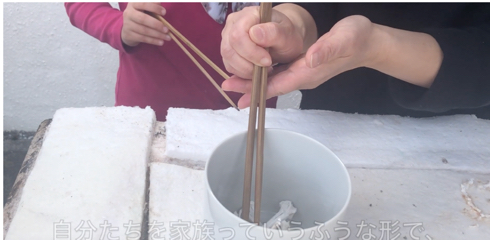
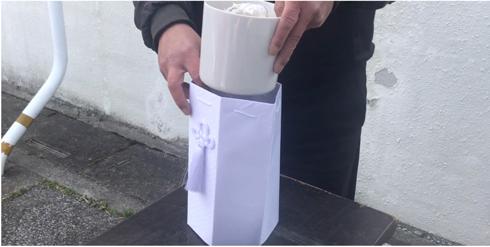
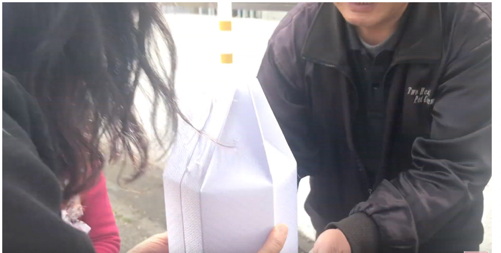
また、おじさんは泣(な)いている妹(いもうと)をこう言(い)って慰(なぐさ)めてくれました。
And then, the middle aged man comforted my sister by saying this.
「飼(か)い主(ぬし)を選(えら)べないペットがたまたまこちらの家族(かぞく)に気(き)に入(い)ってもらえて、亡(な)くなったら泣(な)いてもらえる。
Though all pets can’t choose their owners, your family liked Gigi and when she died, you guys cried for her.
ゴミのように殺(ころ)されている犬猫(いぬねこ)がいっぱいいる中(なか)、家族(かぞく)の一員(いちいん)として泣(な)いてもらえるこの子(こ)は本当(ほんとう)に幸(しあわ)せだったと思(おも)いますよ。」
There are many dogs and cats killed like garbage, though, you guys cried since you thought of Gigi as part of your family, so I am sure she was very happy with you. ”
日本(にほん)のおくりびと(送(おく)りネコ)精神(せいしん)は素敵(すてき)だと思(おも)いました。
I thought Japan’s “Okuribito” thinking is wonderful.
映画( えいが)「おくりびと」は、ちょっとくらい感(かん)じがしますが、面白(おもしろ)いので見(み)てください
It sounds dark, though, the movie, “Okuribito” is interesting. Please watch it!
Genki 2 P 54 ほしい
“ほしい” means, “to want”, however it’s ‘い-adjective” in Japanese.
When it is positive sentence, particle が should be used, and は should be used for negative sentences.
Positive sentence – が ほしい (I want X)
Negative sentence – は ほしくない (I don’t want X)
いい漢字(かんじ)の本(ほん) が ほしいです
I want a good kanji dictionary
When I was a child, I wanted a Nintendo Wii.
子供(こども)の時(とき)、ニンテンドーWii が ほしかったです。
I don’t have much desire for money.
お金(かね) は あまり ほしくないです。
How about “〜たい”?
I want to eat – 食(た)べ+たい stem form + たい
Not “食(た)べる ほしい”ー Many Japanese learners make this mistake.
(1)I want a chocolate. チョコレート が ほしい
(2)I want to eat chocolate. チョコレート を 食(た)べたい
<Quotation 引用(いんよう)>
Ex.)
花子(はなこ)さんは、MacBook Proが ほしい、 と 言(い)っています。
Hanako says she wants a MacBook Pro.
花子(はなこ)さんは、MacBook Pro が ほしい でしょう。
Probably Hanako wants a MacBook Pro.
Aiko says she wants goldfish.
愛子(あいこ)さんは、金魚(きんぎょ)がほしい、と言(い)っています。
Probably Aiko wants to have goldfish.
愛子(あいこ)さんは、金魚(きんぎょ)がほしいでしょう。
<たがる> – want to
We have learned the verb たがる which replaces たい (want to).
You are making an observation of person’s feeling.
In other word, when you see someone is showing a strong desire to do something, you describe that person’s feelings with たがる
Stem form + たがる(たがっています )
It conjugates as an u-verb and is usually used in the form たがっている
ダニエルさんは 日本語(にほんご)を 習(なら)いたがっています。
(I understand that) Daniel wants to study Japanese.
Jennifer wants to visit Japan. (make an observation)
ジェニファーさんは 日本(にほん)に 行(い)きたがっています。
Taro wants to see fireworks. (make an observation / showing strong desire)
太郎(たろう)さんは 花火(はなび)を 見(み)たがっています。
Japanese people (or you too?) tend to guess what people are thinking, so it might be wrong.
<ほしがる> ー want
When someone wants to do something, we say, Short-form + たがる.
Ex.) 食(た)べたい (Someone wants to eat) ー食(た)べたがる(You observe and describe it).
ほしい (to want) has a special verb counterpart ほしがる (You observe that someone wants something and you describe it).
Ex.)
子犬(こいぬ) が ほしい(to want a puppy)ー子犬(こいぬ) を ほしがる (You observe that someone want puppy, and you describe it).
In this case, the particle after the object of desire is を.
Ex.)
Daniel wants a Nintendo Switch. (I am making observation)
ダニエルさんは任天堂(にんてんどう)Switch を ほしがっています。
To me. ほしがっている sounds lovely like a cute girl wants to have something and begging to get it. It depends though.
Also, it sounds like it’s not so easy to get it.
Ex.)
Sayaka wants to have a puppy.
さやかちゃんは子犬(こいぬ) を ほしがっています。
練習(れんしゅう)しましょう!
Let’s practice!
(1) I want chocolate.
チョコレート が ほしいです。
(2) I don’t want chocolate.
チョコレート は ほしくないです。
(3) I want to eat chocolate.
チョコレート を 食(た)べたいです。
(4) Hanako says she wants to have a goldfish. 金魚(きんぎょ)
花子は、金魚が欲しい と言っています。
(5) The girl wants to have a puppy. (I am making observation)
女の子が、子犬(こいぬ) を ほしがっています。